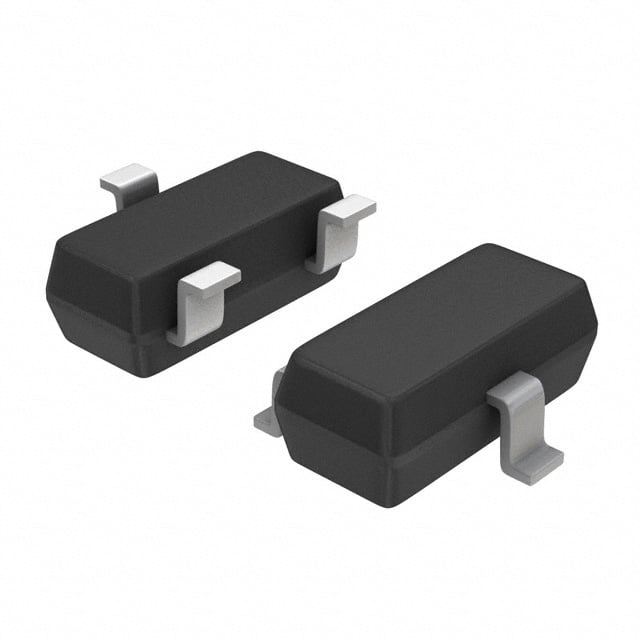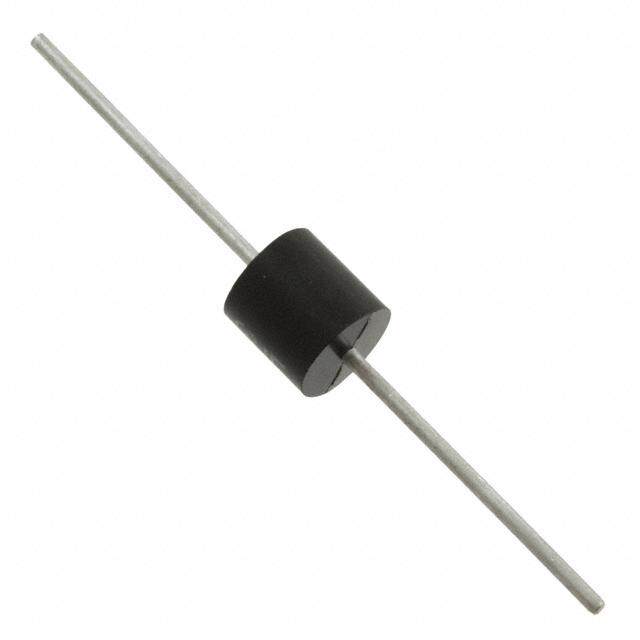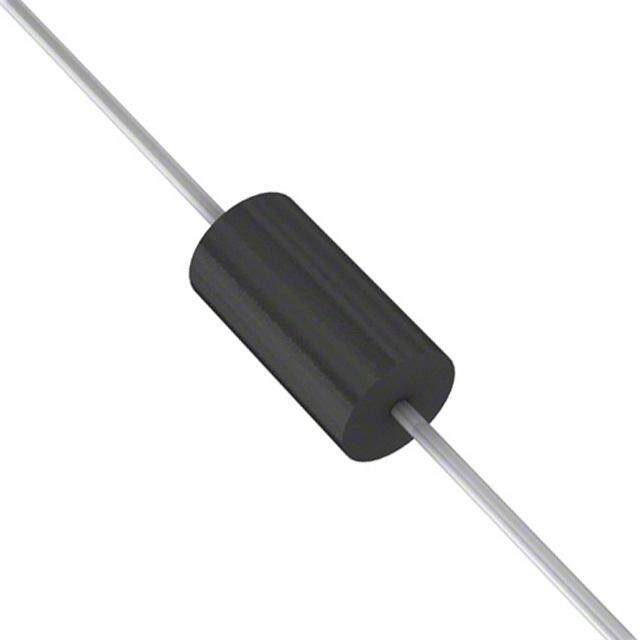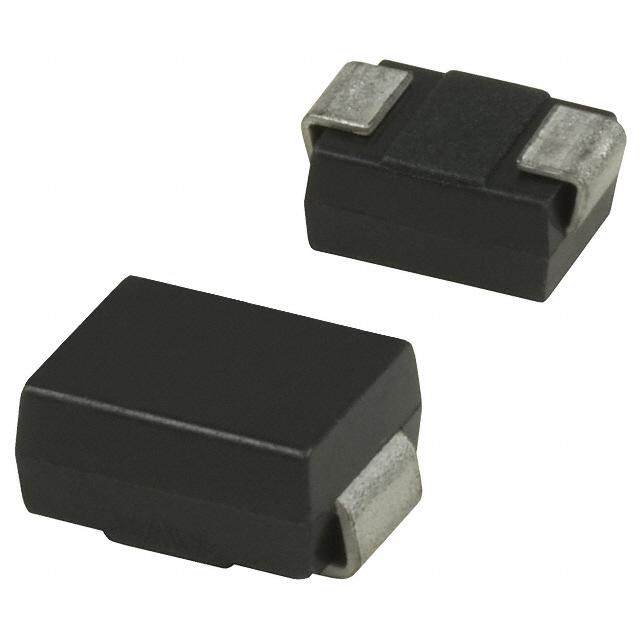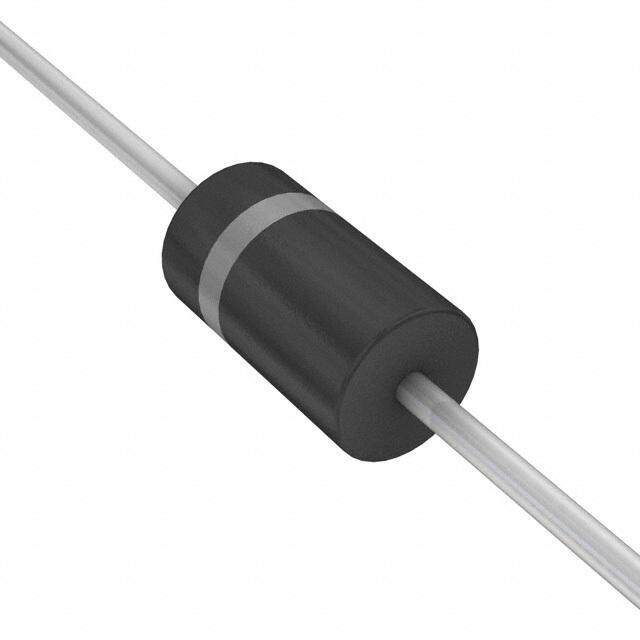- 型号: SM12T1G
- 制造商: ON Semiconductor
- 库位|库存: xxxx|xxxx
- 要求:
| 数量阶梯 | 香港交货 | 国内含税 |
| +xxxx | $xxxx | ¥xxxx |
查看当月历史价格
查看今年历史价格
SM12T1G产品简介:
ICGOO电子元器件商城为您提供SM12T1G由ON Semiconductor设计生产,在icgoo商城现货销售,并且可以通过原厂、代理商等渠道进行代购。 SM12T1G价格参考¥0.42-¥0.42。ON SemiconductorSM12T1G封装/规格:TVS - 二极管, 19V Clamp 12A (8/20µs) Ipp Tvs Diode Surface Mount SOT-23-3 (TO-236)。您可以下载SM12T1G参考资料、Datasheet数据手册功能说明书,资料中有SM12T1G 详细功能的应用电路图电压和使用方法及教程。
| 参数 | 数值 |
| 产品目录 | |
| 描述 | TVS DIODE 12VWM 19VC SOT23TVS二极管阵列 ZEN TVS ARRAY 12V |
| 产品分类 | |
| 品牌 | ON Semiconductor |
| 产品手册 | |
| 产品图片 |
|
| rohs | 符合RoHS无铅 / 符合限制有害物质指令(RoHS)规范要求 |
| 产品系列 | 二极管与整流器,TVS二极管,TVS二极管阵列,ON Semiconductor SM12T1G- |
| 数据手册 | |
| 产品型号 | SM12T1G |
| PCN设计/规格 | |
| 不同频率时的电容 | - |
| 产品目录绘图 |
|
| 产品目录页面 | |
| 产品种类 | TVS二极管阵列 |
| 供应商器件封装 | SOT-23-3(TO-236) |
| 其它名称 | SM12T1GOSDKR |
| 击穿电压 | 13.3 V to 15.75 V |
| 功率-峰值脉冲 | 300W |
| 包装 | Digi-Reel® |
| 单向通道 | 2 |
| 双向通道 | - |
| 商标 | ON Semiconductor |
| 安装类型 | 表面贴装 |
| 安装风格 | SMD/SMT |
| 封装 | Reel |
| 封装/外壳 | TO-236-3,SC-59,SOT-23-3 |
| 封装/箱体 | SOT-23-3 |
| 尺寸 | 1.3 mm W x 2.9 mm L |
| 峰值浪涌电流 | 12 A |
| 峰值脉冲功率耗散 | 300 W |
| 工作温度 | -55°C ~ 150°C |
| 工作电压 | 15.75 V |
| 工厂包装数量 | 3000 |
| 应用 | 通用 |
| 最大工作温度 | + 150 C |
| 最小工作温度 | - 55 C |
| 极性 | Unidirectional |
| 标准包装 | 1 |
| 电压-击穿(最小值) | 13.3V |
| 电压-反向关态(典型值) | 12V |
| 电压-箝位(最大值)@Ipp | 19V |
| 电容 | 95 pF |
| 电流-峰值脉冲(10/1000µs) | 12A (8/20µs) |
| 电源线路保护 | 无 |
| 端接类型 | SMD/SMT |
| 类型 | 齐纳 |
| 系列 | SMxxT1 |
| 通道 | 2 Channels |
| 钳位电压 | 19 V |




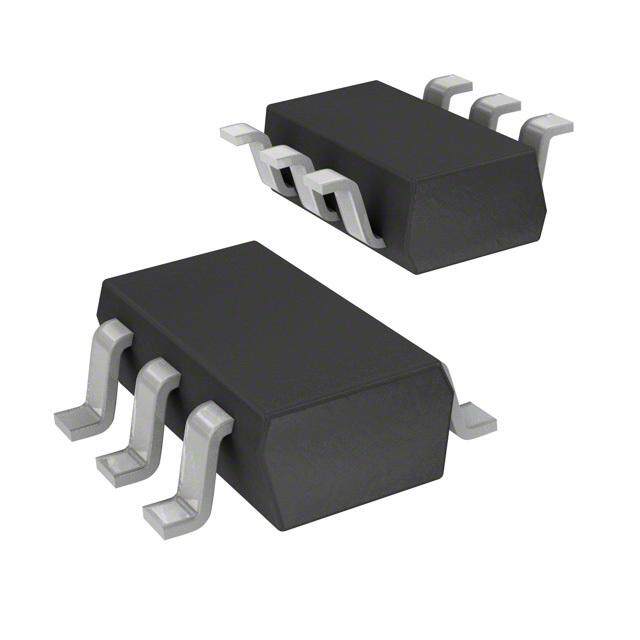
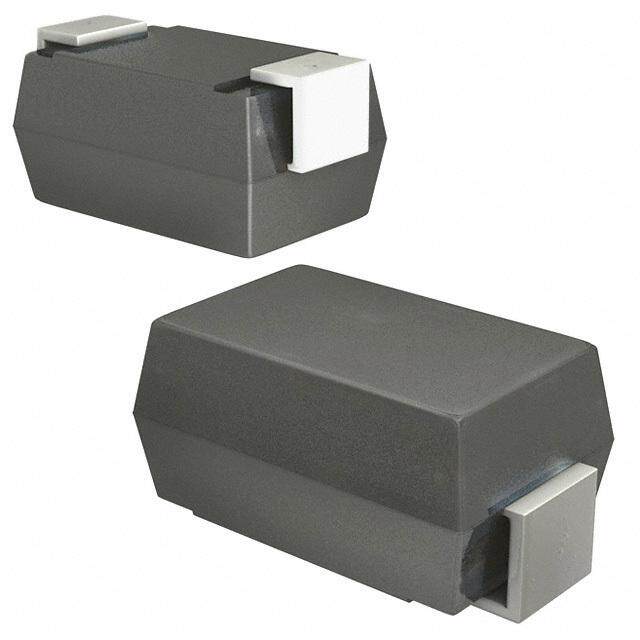

- 商务部:美国ITC正式对集成电路等产品启动337调查
- 曝三星4nm工艺存在良率问题 高通将骁龙8 Gen1或转产台积电
- 太阳诱电将投资9.5亿元在常州建新厂生产MLCC 预计2023年完工
- 英特尔发布欧洲新工厂建设计划 深化IDM 2.0 战略
- 台积电先进制程称霸业界 有大客户加持明年业绩稳了
- 达到5530亿美元!SIA预计今年全球半导体销售额将创下新高
- 英特尔拟将自动驾驶子公司Mobileye上市 估值或超500亿美元
- 三星加码芯片和SET,合并消费电子和移动部门,撤换高东真等 CEO
- 三星电子宣布重大人事变动 还合并消费电子和移动部门
- 海关总署:前11个月进口集成电路产品价值2.52万亿元 增长14.8%



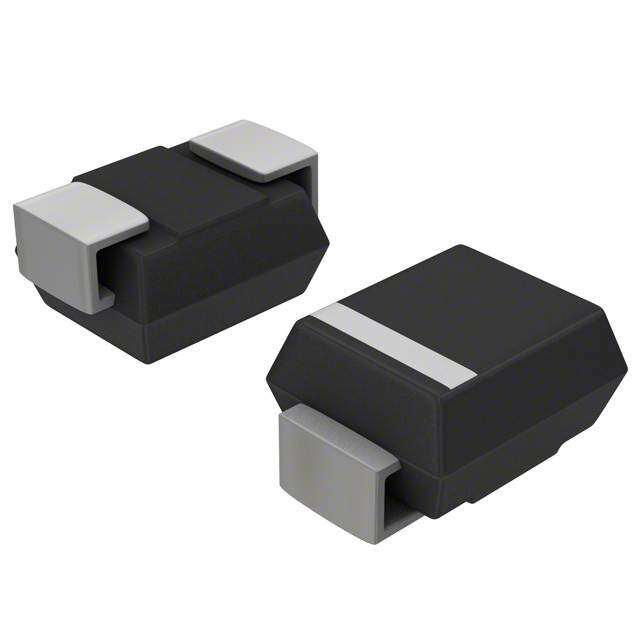

PDF Datasheet 数据手册内容提取
SM12T1 ESD Protection Diode Array Dual Common Anode These dual monolithic silicon zener diodes are designed for applications requiring transient overvoltage protection capability. They are intended for use in voltage and ESD sensitive equipment such as computers, printers, business machines, communication systems, www.onsemi.com medical equipment and other applications. Their dual junction common anode design protects two separate lines using only one package. These PIN1.CATHODE 1 devices are ideal for situations where board space is at a premium. 2.CATHODE 3 3.ANODE 2 Specification Features: • SOT−23 Package Allows Either Two Separate Unidirectional Configurations or a Single Bidirectional Configuration MARKING • Working Peak Reverse Voltage Range − 12 V 3 DIAGRAM • Standard Zener Breakdown Voltage Range − 13.3 V to 15.75 V • Peak Power − 300 Watt (8 X 20 (cid:2)s) 1 2 12M M • Low Leakage • SOT−23 Flammability Rating UL 94 V−0 CASE 318 STYLE 12 12M = Device Code Mechanical Characteristics: M = Date Code CASE: Void-free, transfer-molded, thermosetting plastic case FINISH: Corrosion resistant finish, easily solderable MAXIMUM CASE TEMPERATURE FOR SOLDERING PURPOSES: ORDERING INFORMATION 260°C for 10 Seconds Package designed for optimal automated board assembly Device Package Shipping Small package size for high density applications SM12T1 SOT−23 3000/Tape & Reel Available in 8 mm Tape and Reel Use the Device Number to order the 7 inch/3,000 unit reel. Replace the “T1” with “T3” in the Device Number to order the 13 inch/10,000 unit reel. © Semiconductor Components Industries, LLC, 2001 1 Publication Order Number: November, 2017 − Rev. 1 SM12T1/D
SM12T1 MAXIMUM RATINGS Rating Symbol Value Unit Peak Power Dissipation @ 20 (cid:2)s (Note 1) Ppk 300 Watts @ TL ≤ 25°C IEC 61000−4−2 (ESD) Air ±15 kV Contact ±8.0 IEC 61000−4−4 (EFT) 40 A IEC 61000−4−5 (Lightening) 12 A Total Power Dissipation on FR−5 Board (Note 2) @ TA = 25°C °PD° 225 °mW° Derate above 25°C 1.8 mW/°C Thermal Resistance Junction to Ambient RθJA 556 °C/W Total Power Dissipation on Alumina Substrate (Note 3) @ TA = 25°C °PD° 300 °mW Derate above 25°C 2.4 mW/°C Thermal Resistance Junction to Ambient RθJA 417 °C/W Junction and Storage Temperature Range TJ, Tstg −55 to +150 °C Lead Solder Temperature − Maximum (10 Second Duration) TL 260 °C 1. Non−repetitive current pulse per Figure 3 2. FR−5 = 1.0 x 0.75 x 0.62 in. 3. Alumina = 0.4 x 0.3 x 0.024 in., 99.5% alumina *Other voltages may be available upon request ELECTRICAL CHARACTERISTICS (TA = 25°C unless otherwise noted) UNIDIRECTIONAL (Circuit tied to Pins 1 and 3 or 2 and 3) Symbol Parameter I IPP Maximum Reverse Peak Pulse Current VC Clamping Voltage @ IPP IF VRWM Working Peak Reverse Voltage IR Maximum Reverse Leakage Current @ VRWM VBR Breakdown Voltage @ IT VCVBRVRWM V IT Test Current IIRT VF (cid:3)VBR Maximum Temperature Coefficient of VBR IF Forward Current VF Forward Voltage @ IF IPP ZZT Maximum Zener Impedance @ IZT IZK Reverse Current Uni−Directional ZZK Maximum Zener Impedance @ IZK ELECTRICAL CHARACTERISTICS VBR, Breakdown Voltage VC @ Max IPP Typical Capacitance Device VRWM IR @ VRWM (Volts) IPP = 1 Amp (Note 4) (pF) Device Marking (Volts) ((cid:2)A) Min Max (Volts) (Amps) Pin 1 to 3 @ 0 Volts SM12T1 12M 12 1.0 13.3 15.75 19 12 95 4. 8 × 20 (cid:2)s pulse waveform per Figure 3 www.onsemi.com 2
SM12T1 TYPICAL CHARACTERISTICS 10 300 W) W) ER (k N (m 250 ALUMINA SUBSTRATE W O O 1 TI 200 ULSE P DISSIPA 150 AK P 0.1 WER 100 PE O FR−5 BOARD , PP , PD 50 P P 0.01 0 0.1 1 10 100 1000 0 25 50 75 100 125 150 175 tp, PULSE DURATION ((cid:2)s) TEMPERATURE (°C) Figure 1. Non−Repetitive Peak Pulse Power Figure 2. Steady State Power Derating Curve versus Pulse Time 100 100 T 90 tr PEAK VALUE IRSM @ 8 (cid:2)s 90 N E 80 PULSE WIDTH (tP) IS DEFINED 80 CURR 70 APSE ATKH ACTU RPOREINNTT W DHEECRAEY =T H8E (cid:2)s E (pF) 70 SE 60 NC 60 PUL 50 HALF VALUE IRSM/2 @ 20 (cid:2)s CITA 50 PEAK 4300 CAPA 4300 F tP C, O 20 20 % 10 10 0 0 0 20 40 60 80 0 1 5 8 12 t, TIME ((cid:2)s) BIAS VOLTAGE (VOLTS) Figure 3. 8 × 20 (cid:2)s Pulse Waveform Figure 4. Typical Diode Capacitance www.onsemi.com 3
SM12T1 TYPICAL COMMON ANODE APPLICATIONS A quad junction common anode design in a SOT−23 when board space is at a premium. Two simplified examples package protects four separate lines using only one package. of surge protection applications are illustrated below. This adds flexibility and creativity to PCB design especially Computer Interface Protection A KEYBOARD B TERMINAL FUNCTIONAL I/O C PRINTER DECODER D ETC. GND SM12T1 Microprocessor Protection VDD VGG ADDRESS BUS RAM ROM DATA BUS CPU I/O SM12T1 CLOCK CONTROL BUS GND SM12T1 www.onsemi.com 4
SM12T1 INFORMATION FOR USING THE SOT−23 SURFACE MOUNT PACKAGE MINIMUM RECOMMENDED FOOTPRINT FOR SURFACE MOUNTED APPLICATIONS Surface mount board layout is a critical portion of the interface between the board and the package. With the total design. The footprint for the semiconductor packages correct pad geometry, the packages will self align when must be the correct size to insure proper solder connection subjected to a solder reflow process. 0.037 0.037 0.95 0.95 0.079 2.0 0.035 0.9 0.031 inches 0.8 mm SOT−23 SOT−23 POWER DISSIPATION The power dissipation of the SOT−23 is a function of the SOLDERING PRECAUTIONS drain pad size. This can vary from the minimum pad size The melting temperature of solder is higher than the rated for soldering to a pad size given for maximum power temperature of the device. When the entire device is heated dissipation. Power dissipation for a surface mount device is to a high temperature, failure to complete soldering within determined by T , the maximum rated junction J(max) a short time could result in device failure. Therefore, the temperature of the die, RθJA, the thermal resistance from following items should always be observed in order to the device junction to ambient, and the operating minimize the thermal stress to which the devices are temperature, T . Using the values provided on the data A subjected. sheet for the SOT−23 package, P can be calculated as D • Always preheat the device. follows: • The delta temperature between the preheat and TJ(max) − TA soldering should be 100°C or less.* P = D RθJA • When preheating and soldering, the temperature of the leads and the case must not exceed the maximum The values for the equation are found in the maximum temperature ratings as shown on the data sheet. When ratings table on the data sheet. Substituting these values into the equation for an ambient temperature T of 25°C, using infrared heating with the reflow soldering A method, the difference shall be a maximum of 10°C. one can calculate the power dissipation of the device which • The soldering temperature and time shall not exceed in this case is 225 milliwatts. 260°C for more than 10 seconds. 150°C − 25°C PD = = 225 milliwatts • When shifting from preheating to soldering, the 556°C/W maximum temperature gradient shall be 5°C or less. The 556°C/W for the SOT−23 package assumes the use • After soldering has been completed, the device should of the recommended footprint on a glass epoxy printed be allowed to cool naturally for at least three minutes. circuit board to achieve a power dissipation of 225 Gradual cooling should be used as the use of forced milliwatts. There are other alternatives to achieving higher cooling will increase the temperature gradient and power dissipation from the SOT−23 package. Another result in latent failure due to mechanical stress. alternative would be to use a ceramic substrate or an • Mechanical stress or shock should not be applied ® aluminum core board such as Thermal Clad . Using a during cooling. board material such as Thermal Clad, an aluminum core * Soldering a device without preheating can cause board, the power dissipation can be doubled using the same excessive thermal shock and stress which can result in footprint. damage to the device. www.onsemi.com 5
SM12T1 PACKAGE DIMENSIONS SOT−23 (TO−236) CASE 318−08 ISSUE AR D NOTES: 1. DIMENSIONING AND TOLERANCING PER ASME Y14.5M, 1994. 2. CONTROLLING DIMENSION: MILLIMETERS. 3. MAXIMUM LEAD THICKNESS INCLUDES LEAD FINISH. 0.25 MINIMUM LEAD THICKNESS IS THE MINIMUM THICKNESS OF 3 THE BASE MATERIAL. E HE T 4. DPRIMOETNRSUIOSINOSN DS, AONRD G EA DTEO BNUORTR INS.CLUDE MOLD FLASH, 1 2 MILLIMETERS INCHES DIM MIN NOM MAX MIN NOM MAX L A 0.89 1.00 1.11 0.035 0.039 0.044 3Xb L1 A1 0.01 0.06 0.10 0.000 0.002 0.004 b 0.37 0.44 0.50 0.015 0.017 0.020 e VIEW C c 0.08 0.14 0.20 0.003 0.006 0.008 TOP VIEW D 2.80 2.90 3.04 0.110 0.114 0.120 E 1.20 1.30 1.40 0.047 0.051 0.055 e 1.78 1.90 2.04 0.070 0.075 0.080 L 0.30 0.43 0.55 0.012 0.017 0.022 A L1 0.35 0.54 0.69 0.014 0.021 0.027 HE 2.10 2.40 2.64 0.083 0.094 0.104 T 0° −−− 10° 0° −−− 10° A1 c SIDE VIEW SEE VIEW C STYLE 12: END VIEW PIN 1. CATHODE 2. CATHODE 3. ANODE RECOMMENDED SOLDERING FOOTPRINT* 3X 2.90 0.90 3X0.80 0.95 PITCH DIMENSIONS: MILLIMETERS *For additional information on our Pb−Free strategy and soldering details, please download the ON Semiconductor Soldering and Mounting Techniques Reference Manual, SOLDERRM/D. Thermal Clad is a registered trademark of the Bergquist Company ON Semiconductor and are trademarks of Semiconductor Components Industries, LLC dba ON Semiconductor or its subsidiaries in the United States and/or other countries. ON Semiconductor owns the rights to a number of patents, trademarks, copyrights, trade secrets, and other intellectual property. A listing of ON Semiconductor’s product/patent coverage may be accessed at www.onsemi.com/site/pdf/Patent−Marking.pdf. ON Semiconductor reserves the right to make changes without further notice to any products herein. ON Semiconductor makes no warranty, representation or guarantee regarding the suitability of its products for any particular purpose, nor does ON Semiconductor assume any liability arising out of the application or use of any product or circuit, and specifically disclaims any and all liability, including without limitation special, consequential or incidental damages. Buyer is responsible for its products and applications using ON Semiconductor products, including compliance with all laws, regulations and safety requirements or standards, regardless of any support or applications information provided by ON Semiconductor. “Typical” parameters which may be provided in ON Semiconductor data sheets and/or specifications can and do vary in different applications and actual performance may vary over time. All operating parameters, including “Typicals” must be validated for each customer application by customer’s technical experts. ON Semiconductor does not convey any license under its patent rights nor the rights of others. ON Semiconductor products are not designed, intended, or authorized for use as a critical component in life support systems or any FDA Class 3 medical devices or medical devices with a same or similar classification in a foreign jurisdiction or any devices intended for implantation in the human body. Should Buyer purchase or use ON Semiconductor products for any such unintended or unauthorized application, Buyer shall indemnify and hold ON Semiconductor and its officers, employees, subsidiaries, affiliates, and distributors harmless against all claims, costs, damages, and expenses, and reasonable attorney fees arising out of, directly or indirectly, any claim of personal injury or death associated with such unintended or unauthorized use, even if such claim alleges that ON Semiconductor was negligent regarding the design or manufacture of the part. ON Semiconductor is an Equal Opportunity/Affirmative Action Employer. This literature is subject to all applicable copyright laws and is not for resale in any manner. PUBLICATION ORDERING INFORMATION LITERATURE FULFILLMENT: N. American Technical Support: 800−282−9855 Toll Free ON Semiconductor Website: www.onsemi.com Literature Distribution Center for ON Semiconductor USA/Canada 19521 E. 32nd Pkwy, Aurora, Colorado 80011 USA Europe, Middle East and Africa Technical Support: Order Literature: http://www.onsemi.com/orderlit Phone: 303−675−2175 or 800−344−3860 Toll Free USA/Canada Phone: 421 33 790 2910 Fax: 303−675−2176 or 800−344−3867 Toll Free USA/Canada Japan Customer Focus Center For additional information, please contact your local Email: orderlit@onsemi.com Phone: 81−3−5817−1050 Sales Representative ◊ www.onsemi.com SM12T1/D 6
Mouser Electronics Authorized Distributor Click to View Pricing, Inventory, Delivery & Lifecycle Information: O N Semiconductor: SM05T1G SM12T1G
 Datasheet下载
Datasheet下载